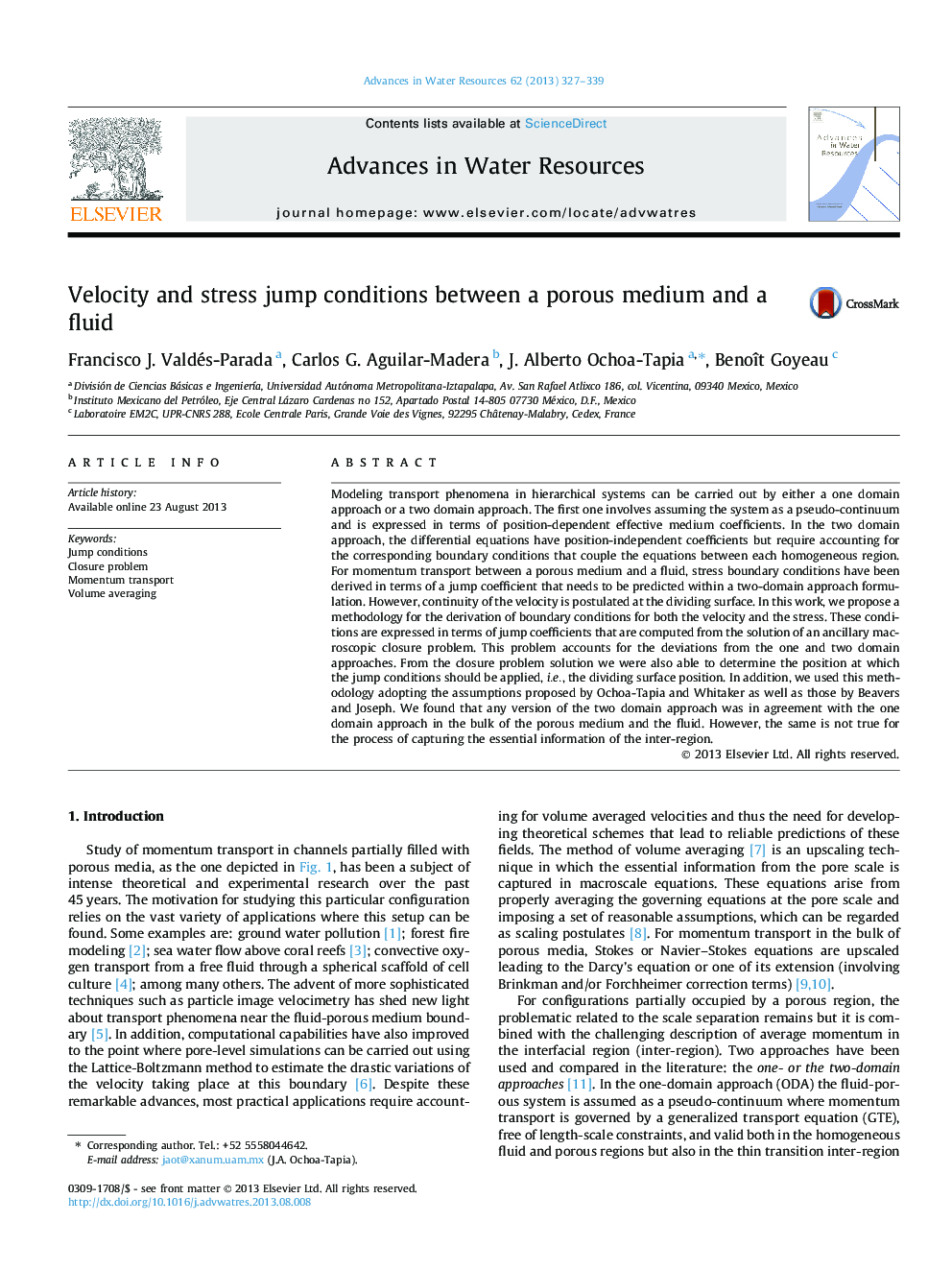| کد مقاله | کد نشریه | سال انتشار | مقاله انگلیسی | نسخه تمام متن |
|---|---|---|---|---|
| 4525625 | 1323781 | 2013 | 13 صفحه PDF | دانلود رایگان |

• Closure problems were derived to predict the effective coefficients for both stress and velocity jump conditions.
• The solution of the closure problem does not require the velocity field of any macroscopic model.
• The location of the dividing surface where the jump conditions are imposed is predicted as part of the closure process.
• This methodology was also applied considering the assumptions made by Beavers and Joseph and by Ochoa-Tapia and Whitaker.
Modeling transport phenomena in hierarchical systems can be carried out by either a one domain approach or a two domain approach. The first one involves assuming the system as a pseudo-continuum and is expressed in terms of position-dependent effective medium coefficients. In the two domain approach, the differential equations have position-independent coefficients but require accounting for the corresponding boundary conditions that couple the equations between each homogeneous region. For momentum transport between a porous medium and a fluid, stress boundary conditions have been derived in terms of a jump coefficient that needs to be predicted within a two-domain approach formulation. However, continuity of the velocity is postulated at the dividing surface. In this work, we propose a methodology for the derivation of boundary conditions for both the velocity and the stress. These conditions are expressed in terms of jump coefficients that are computed from the solution of an ancillary macroscopic closure problem. This problem accounts for the deviations from the one and two domain approaches. From the closure problem solution we were also able to determine the position at which the jump conditions should be applied, i.e.i.e., the dividing surface position. In addition, we used this methodology adopting the assumptions proposed by Ochoa-Tapia and Whitaker as well as those by Beavers and Joseph. We found that any version of the two domain approach was in agreement with the one domain approach in the bulk of the porous medium and the fluid. However, the same is not true for the process of capturing the essential information of the inter-region.
Journal: Advances in Water Resources - Volume 62, Part B, December 2013, Pages 327–339